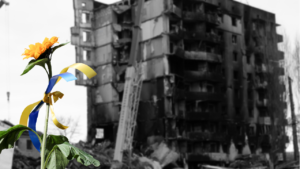The world is certainly experiencing its share of troubles and the international community’s timidity has been exposed in places like the Darfur region of Sudan. Another area that has suffered a tremendous humanitarian disaster is northern Uganda, where an estimated two million people have been displaced as a result of two decades of fighting. John Edwards, writing in the Washington Post, notes that peace now has a chance in that wartorn country if the international community is willing to get involved [“To End Uganda’s Nightmare,” 31 October 2006].
In areas where security is improving and people are beginning to go home, the challenges are just beginning. First among them is the need for adequate access to clean water and sanitation. The rehabilitation and reconstruction of schools, health clinics and other basic infrastructure are equally critical.
What Edwards is calling for is a Development-in-a-Box™ approach for areas where peace has a chance. But Edwards goes on to note what I have written before, you can’t have real development until you have security.
Before people will feel safe to go home, there must be peace. The talks between the government of Uganda and the LRA [Lord’s Resistance Army] offer an unprecedented opportunity to secure a lasting peace in this long and deadly conflict. A cease-fire was signed at the end of August, but as was made clear during my discussions there, it is very fragile. As these African-led negotiations continue, the United States and the international community must step forward to support the talks — not stand on the sidelines and hope for the best.
The conflict in northern Uganda has been tied to troubles in southern Sudan and that country must also be involved in the peace process. Edwards recommends four steps to support the peace.
First, the United States and the United Nations should offer whatever support outside mediators, led by the government of southern Sudan, require. In particular, assistance in monitoring the cease-fire and the assembly of LRA fighters at two agreed-upon sites in southern Sudan would be critical to boosting the confidence of both sides — while also holding them accountable to their commitments.
Second, the United States should publicly voice its support of the peace talks and encourage the Ugandan government and the LRA to maintain their commitment to the process. It’s understandable that Uganda’s government is skeptical of the LRA’s intentions, given the atrocities that organization has committed. Yet this is the closest the two sides have ever come to a comprehensive agreement. Uganda needs to know that Washington stands behind the drive for peace and will be a supportive ally after an accord is signed.
Third, the key donors — the United States, European countries and the United Nations — must come together and make clear their commitment to providing the financial assistance necessary to help victims rebuild their homes and villages. This will create incentives for both sides and, just as important, lay the foundation for long-term reconstruction and reconciliation — not only in Northern communities that have been terrorized by the LRA but also between Northern and Southern Uganda. Once the agricultural breadbasket of Uganda, the North has been marginalized and impoverished for decades. It must be integrated more fully into the country.
Finally, the United States and the international community must fulfill their pledges to help southern Sudan recover after more than 30 years of its own war. Peace and reconstruction in Northern Uganda have to be supported by reconstruction and development in neighboring southern Sudan, which is critical for regional economic recovery and cross-border trade.
Working with the Sudanese government will be problematic considering the troubles in Darfur and the fact that they just kicked out the UN’s chief envoy. Helping the region achieve sustainable development will, in the long run, be a lot cheaper than making regular humanitarian interventions. The only other alternative is doing nothing, which any civilized society should find repugnant. Doing something, just for the sake of doing something, is little better. That is why I continue to promote a Development-in-a-Box approach, which uses best practices and communities of interest to achieve lasting results.




